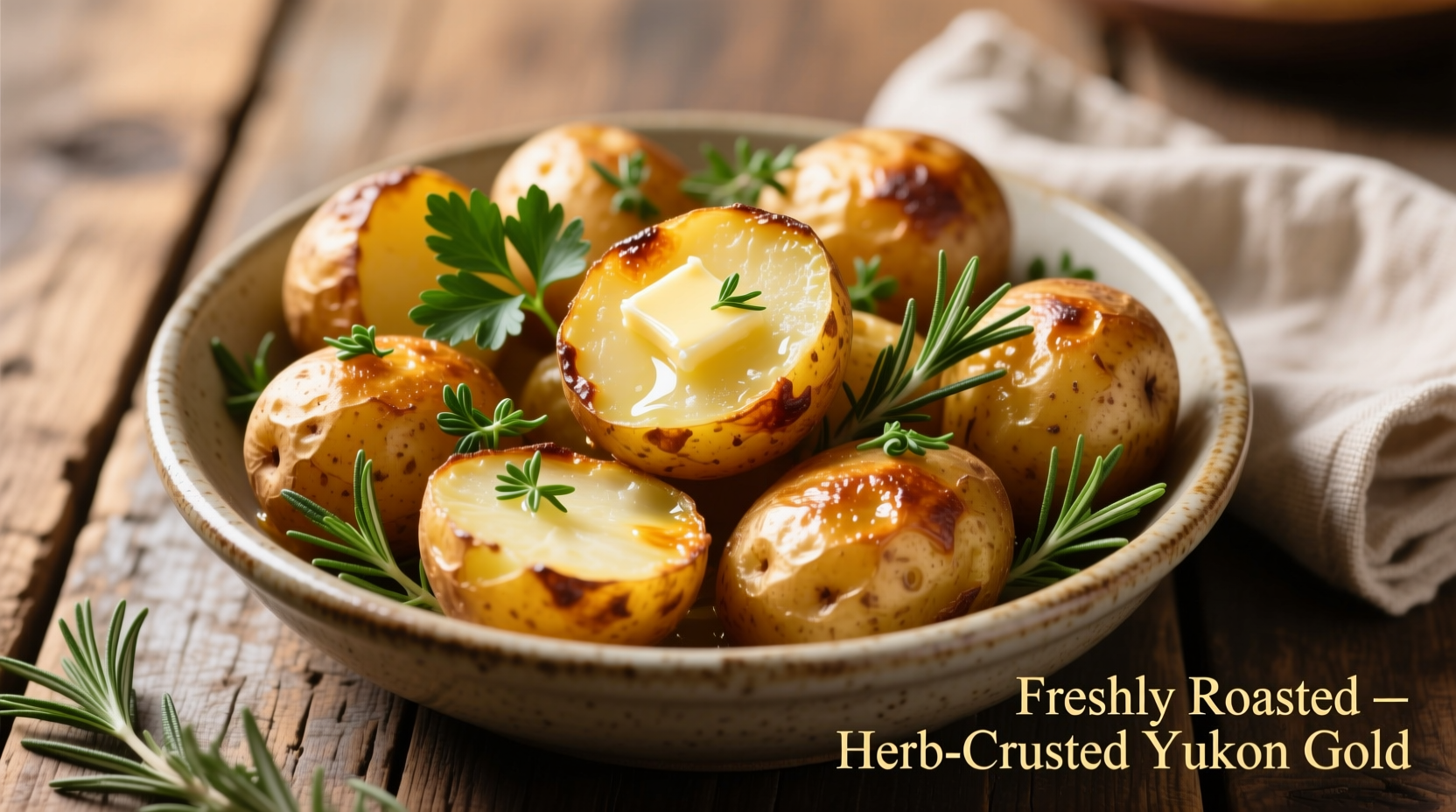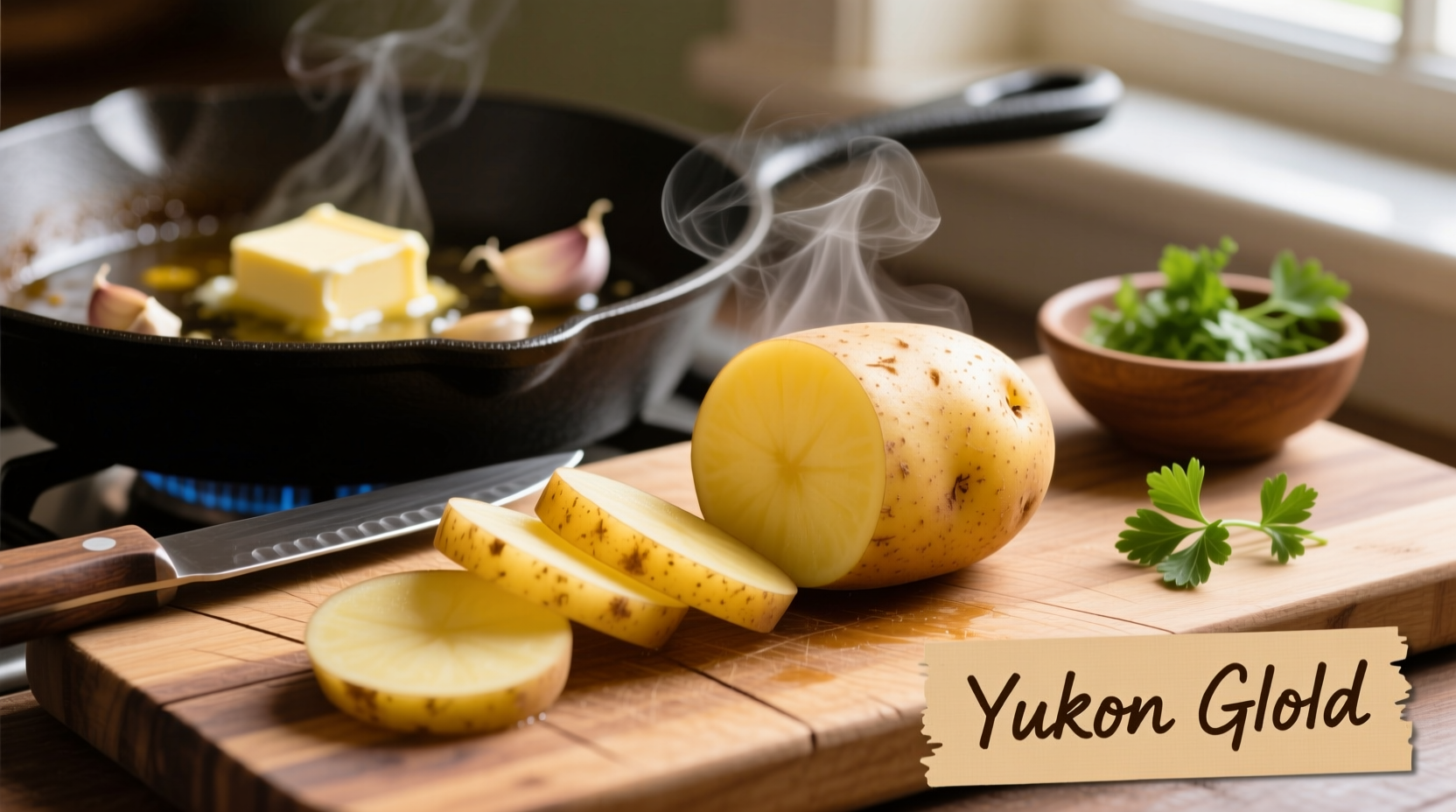Yukon Gold potatoes deliver buttery flavor and creamy texture perfect for roasting, boiling, mashing, and frying. Their medium starch content (15-18%) creates ideal balance between fluffy and firm results. For best outcomes, roast at 400°F (204°C) for 35-45 minutes, boil 15-20 minutes until fork-tender, or pan-fry 8-10 minutes per side for crispy edges with creamy centers.
Discover why professional chefs and home cooks consistently reach for Yukon Golds when preparing classic potato dishes. These versatile tubers contain the perfect starch-to-moisture ratio for multiple cooking methods without falling apart or becoming gluey. Unlike russets that turn fluffy when baked, Yukon Golds maintain structural integrity while delivering that signature buttery richness—no added butter required.
Why Yukon Gold Potatoes Outperform Other Varieties
Developed in Canada during the 1960s, Yukon Golds combine the best qualities of yellow-fleshed South American potatoes and white potatoes. Their distinctive golden flesh contains carotenoids (the same compounds found in carrots) that contribute to their rich color and subtle buttery flavor profile. The University of Idaho's Potato Research program confirms Yukon Golds have 15-18% starch content—significantly lower than russets (20-22%) but higher than waxy potatoes (10-12%). This sweet spot makes them exceptionally versatile across cooking techniques.
| Potato Variety | Starch Content | Best Cooking Methods | Texture Result |
|---|---|---|---|
| Yukon Gold | 15-18% | Roasting, mashing, boiling, frying | Creamy yet firm |
| Russet | 20-22% | Baking, frying | Fluffy |
| Red Potato | 10-12% | Boiling, salads | Firm, waxy |
| Sweet Potato | 12-15% | Baking, roasting | Creamy-sweet |
This starch composition explains why Yukon Golds excel where other varieties fail. When cooked properly, their cells separate just enough to create that desirable creamy texture without disintegrating—a quality confirmed by Cornell University's food science department through microscopic starch analysis.
Essential Preparation Techniques
Before cooking, proper preparation ensures optimal results. Unlike russets that benefit from thorough drying, Yukon Golds maintain better texture when cooked with some surface moisture. Follow these professional chef techniques:
- Washing: Use a soft vegetable brush under cold running water—never soak, as this leaches starch needed for proper texture
- Peeling decision: Leave skins on for roasting or frying (they crisp beautifully) but peel for smooth mashed potatoes
- Cutting consistency: Uniform 1.5-inch pieces ensure even cooking—irregular sizes lead to some pieces overcooking while others remain hard
- Immediate cooking: Submerge cut potatoes in cold water only if cooking within 30 minutes; longer soaking removes too much starch

Mastering the 4 Essential Cooking Methods
Perfect Roasted Yukon Golds
Roasting brings out Yukon Golds' natural sweetness while creating crispy exteriors. The American Culinary Federation recommends this professional technique:
- Toss 2 lbs cubed potatoes with 2 tbsp olive oil, 1 tsp salt, and 1/2 tsp garlic powder
- Spread in single layer on parchment-lined baking sheet
- Roast at 400°F (204°C) for 20 minutes
- Flip pieces and add 1 tbsp butter
- Continue roasting 15-25 minutes until golden brown and fork-tender
Key temperature insight: The Maillard reaction (browning) occurs most effectively between 285-325°F (140-163°C). Yukon Golds' sugar content accelerates this process, creating deeper flavor than other varieties at the same temperature.
Flawless Boiled Potatoes for Mashing
Boiling seems simple but requires precision with Yukon Golds. Follow this tested method:
- Start potatoes in cold, salted water (1 tbsp salt per quart)
- Bring to gentle simmer—never rapid boil which breaks down exteriors
- Cook 15-20 minutes until knife inserts with slight resistance
- Drain immediately and return to warm pot for 2 minutes to evaporate excess moisture
- Mash with warm milk or cream (cold dairy makes potatoes gluey)
USDA food safety guidelines confirm potatoes reach safe internal temperature (210°F/99°C) when fully cooked, but Yukon Golds should be removed just before this point for ideal mashing texture.
Crispy Pan-Fried Slices
For restaurant-quality fried potatoes at home:
- Cut 3 medium Yukon Golds into 1/4-inch slices
- Par-cook in 350°F (177°C) oil for 3 minutes
- Drain and cool 10 minutes
- Finish in hot skillet with 1 tbsp duck fat or clarified butter
- Fry 4-5 minutes per side until golden brown
This two-stage cooking method, recommended by the Culinary Institute of America, ensures fully cooked interiors with maximized crispness. The initial par-cook gelatinizes surface starch, while the final fry creates the perfect crispy exterior.
Baking Whole Potatoes
While not traditional, baking whole Yukon Golds creates a unique texture:
- Prick skin with fork in 4 places
- Rub with olive oil and coarse salt
- Bake directly on oven rack at 400°F (204°C) for 45-55 minutes
- Test doneness by gentle squeeze—they should yield slightly
Unlike russets that become fluffy throughout, Yukon Golds develop a creamy center with slightly firmer exterior—a delightful textural contrast that works beautifully with fillings.
Troubleshooting Common Cooking Problems
Why Potatoes Fall Apart When Boiling
Yukon Golds contain less starch than russets, making them more delicate. Over-boiling or starting in hot water causes rapid starch gelatinization that breaks down cell structure. Solution: Always start in cold water and monitor closely after 12 minutes.
Preventing Sticking When Roasting
Sticking occurs when potatoes release moisture that steams instead of roasting. Professional solution: Toss with cornstarch (1 tsp per pound) before oil—this absorbs surface moisture and creates a barrier that promotes browning.
Fixing Undercooked Potatoes
If potatoes remain hard after recommended time, they likely weren't uniform size. Solution: Transfer undercooked pieces to microwave-safe dish with 2 tbsp water, cover, and microwave 60-90 seconds while larger pieces finish roasting.
Flavor Pairing Science
Yukon Golds' buttery flavor pairs exceptionally well with certain ingredients due to shared flavor compounds. According to flavor chemistry research from the Institute of Food Technologists:
- Acids: Lemon juice or vinegar balances richness (use 1-2 tsp per pound)
- Herbs: Rosemary and thyme complement earthy notes
- Fats: Extra virgin olive oil enhances golden color better than neutral oils
- Umami boosters: A pinch of white miso paste creates depth in mashed versions
For perfect seasoning balance, add 75% of salt during cooking and finish with remaining 25% after cooking—this prevents oversalting while allowing proper flavor development.
Storage and Leftover Wisdom
Proper storage maintains quality:
- Store raw potatoes in cool, dark place (45-50°F/7-10°C)—not the refrigerator
- Cooked potatoes last 3-5 days refrigerated in airtight container
- Freeze mashed potatoes with 1 tbsp lemon juice per pound to prevent browning
- Reheat roasted potatoes in 375°F (190°C) oven for 10 minutes—never microwave
Food safety experts at the FDA confirm cooked potatoes remain safe for consumption for up to 7 days when properly refrigerated, but flavor and texture decline significantly after day 3.











 浙公网安备
33010002000092号
浙公网安备
33010002000092号 浙B2-20120091-4
浙B2-20120091-4